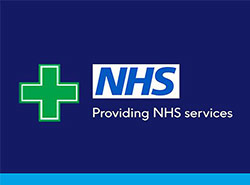From potential causes to ways to consider easing it, we take a look at all things muscle soreness…
Whether it’s a bad back, a tight calf or an ankle sprain, we’ve probably all experienced muscle aches or soreness at some point in our lives.
Here, we’re exploring the common causes of muscle ache, plus we give our top tips for easing sore muscles with healthy habits and at-home remedies.
Common causes of muscle pain
Muscle ache is also known as myalgia, and there’s lots of different reasons we might feel a bit of muscle soreness. Whether you’ve upped your weights in the gym or are feeling a little stressed, here’s a closer look at some of the most common causes of muscle aches or discomfort.
1. Overuse or strain from physical activity
Sprains and strains are common injuries that affect muscles all over our body. They happen when you overstretch or twist a muscle. Not warming up properly before exercising, tired muscles and playing sport are all common causes.
Your injury is likely a sprain or strain if:
- You have pain, tenderness or weakness – usually around your ankle, foot, wrist, thumb, knee, leg or back
- The injured area is swollen or bruised
- You can’t put weight on the injury
- You have muscle spasms or cramping
If you do have a sprain or strain, follow PRICE therapy for the first two to three days. This should help to bring down the swelling and support the injury. The five PRICE steps are as follows:
- Protect – with a support or shoes that support your foot or ankle
- Rest – avoid any exercise or activities and don’t put any weight on the injury
- Ice – apply an ice pack to the injury for up to 20 minutes every two to three hours
- Compression – wrap a bandage around the injury to support it
- Elevate – keep it raised on a pillow as much as possible
Most strains will feel better after two weeks, but severe strains could take months to get back to normal. Make sure to see your GP if you’re worried.
2. Delayed onset muscle soreness (DOMS)
As the age old saying goes, ‘no pain, no gain,’ and when you start a new exercise regime (like Couch to 5K) or increase the intensity of your usual workouts, it’s totally normal for your muscles to feel achy.
This is because when your body works in a different way, your muscle fibres go through microscopic damage. Don’t panic, though – this is all part of the process that will lead to better strength as your muscles recover and build.
Whether it’s mild, severe or somewhere in-between, muscle soreness usually shows up one or two days after exercising and lasts anywhere between three and five days. This is different to a sprain which is usually felt straight away or very shortly after your activity. As long as you’re sure the pain you’re experiencing is DOMS (and not a strain) you should be okay to continue exercising. If you’re struggling to get going, it might be a good idea to take a rest day or focus on exercises that target less achy muscles.
3. Poor posture or prolonged sitting
Find yourself slouching over a laptop or sitting down a lot throughout the day? Bad posture and prolonged sitting can actually lead to muscle problems too. According to the NHS, excessive sitting slows down our metabolisms and may cause weaker bones and muscles.
You can reduce your sitting time by making little switches, for example: standing on the train or bus, taking the stairs rather than the lift or escalators, heading on walking meetings, using a standing desk or parking further away and getting a few extra steps in.
4. Everyday stress & tension
We sometimes carry a lot of tension in our bodies. Everyday stress can cause lots of different physical symptoms, one of these being muscle stiffness or aches.
If you think your discomfort could be down to everyday stress, try to ease this a little. Understanding the cause of your feelings of stress may help you manage it better in the first instance. While everyone will be different, things like relaxation techniques, exercising, heading out on a walk, speaking with a loved one and carving out time for some self-care may also help you unwind.
Medical conditions that affect muscles
Sometimes muscle discomfort is down to specific medical conditions. For example, fibromyalgia is a condition which can lead to muscle stiffness and pain all over the body, among other symptoms.
The exact cause of fibromyalgia is unknown, but it’s thought to be linked with changes in the way the central nervous system processes pain messages carried around the body. While there’s no cure for fibromyalgia, there are treatments that can help relieve some of the symptoms and make it easier to live with, including:
- Lifestyle changes, such as exercise and relaxation techniques
- Talking therapies, such as cognitive behavioural therapy (CBT)
- Medicine
Other conditions that may cause muscle symptoms include chronic fatigue syndrome, flu, autoimmune disorders (like lupus) and thyroid problems.
Top tips for easing sore muscles
Whether it’s down to DOMS, an injury or a medical condition, you can’t totally prevent muscle soreness. However, there are plenty of things you can do to help ease the discomfort and speed up the recovery process (if it is a treatable injury.)
Gently does it
If you’re beginning a new exercise programme, it’s all too tempting to dive straight in at the deep end. Try to start gently and gradually, giving your muscles time to adapt.
Preparation is key
Although there’s not much evidence that warming up will prevent DOMS, exercising with warmed-up muscles will improve your performance and reduce your chance of injury. After all, no one wants to be sat on the sidelines with a pulled hammy!
Stretch it out
From thigh stretches to calf stretches, it's thought that stretching will help you cool down gradually, improve your flexibility and prevent injury. Here's how to stretch after exercising.
Just roll with it
Love it or hate it, it’s thought that foam rolling can improve muscular performance, as well as reducing muscle fatigue and soreness. Foam rollers are available in all shapes, sizes and textures depending on your preference.
Rest up
If you’re serious about your training, you need to be serious about your recovery, too. There’s no hard and fast rule for how many rest days you should be taking each week, but just make sure you’re listening to your body.
And if you do experience an injury, make sure to rest it until it feels better.
Sleep
As well as feeling groggy the next day, skimping on shut-eye can make it harder for your body to recover from exercise. We should all be aiming to clock seven to nine hours in the land of nod. If you’re struggling, head this way for six expert-approved sleep tips.
Keep drinking
We all know that hydration is key, but did you know that it can actually help to fuel your muscles and promote recovery? You’ll need to stay hydrated before, during and after your workouts and, as a guideline, the NHS recommends we drink around six to eight glasses of fluid per day.
Heat things up
Heat therapy can be used to soothe discomfort and ease aches and muscle stiffness by helping to improve circulation and blood flow to a particular area. You could try heated pads, a wheat bag, deep heat cream or even hopping in the bath, just make sure you only use heat therapy on an injury that’s over two days old to avoid making it worse. The exception to this is when you have a new lower back strain. A lot of the pain in this case is caused by muscle spasm rather than tissue damage, so heat is often more helpful than ice.
Read more about hot (and cold) therapy in our handy guide.
At-home treatments for muscle aches
Whether it’s a case of DOMS or a pesky strain, from hot and cold therapy to a whole host of pain relief medication, we’ve got lots of products designed to help ease muscle discomfort.
Here’s a few pain relief treatments you could consider:
When should you see a doctor?
If your muscle injury is minor, you won’t usually need to see a doctor and can look after yourself at home. If your muscle symptoms are severe, aren’t getting any better with treatment or are worsening, make an appointment to see your GP.
Frequently asked questions
When should I be worried about muscle discomfort?
As we’ve said, if your discomfort is severe or doesn’t get better with at-home treatment, you should go and get checked out by your GP. It can also be a symptom of something more serious, so if you are worried, do book an appointment with your doctor.
What is the best thing to take?
There are lots of different treatments you could consider for easing muscle aches and discomfort, and which you go for will vary depending on person to person. You might like to try pain relief medication, a deep heat cream, a cold compress or more. Check out our pain relief products here.
Should I exercise when sore?
If you think you’ve got a sprain or strain, avoid strenuous exercising (such as running) for up to eight weeks, as you could make the injury worse.
Meanwhile, if it’s DOMS (and definitely not a strain) you should be okay to continue exercising, though if it’s painful, it’s usually best to wait until this goes away.
Remember though, you know your body the best so you’re in the best place to decide whether you’re able to exercise or not, and to what intensity.







